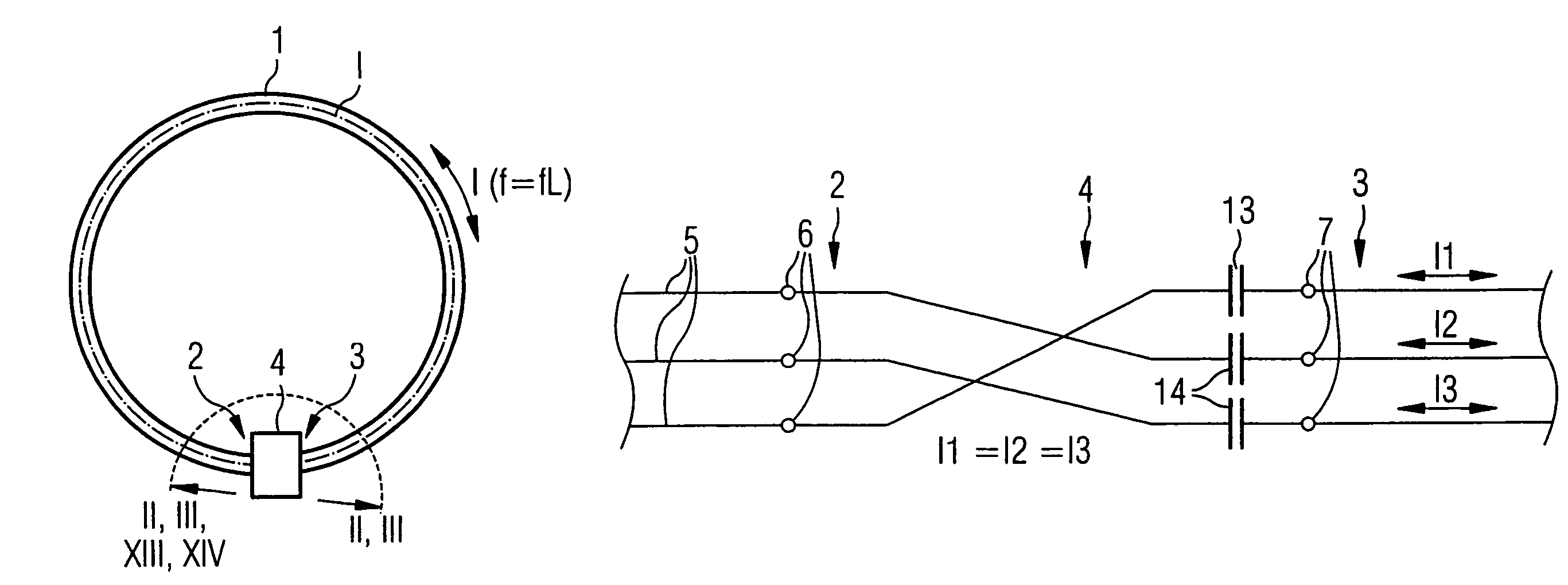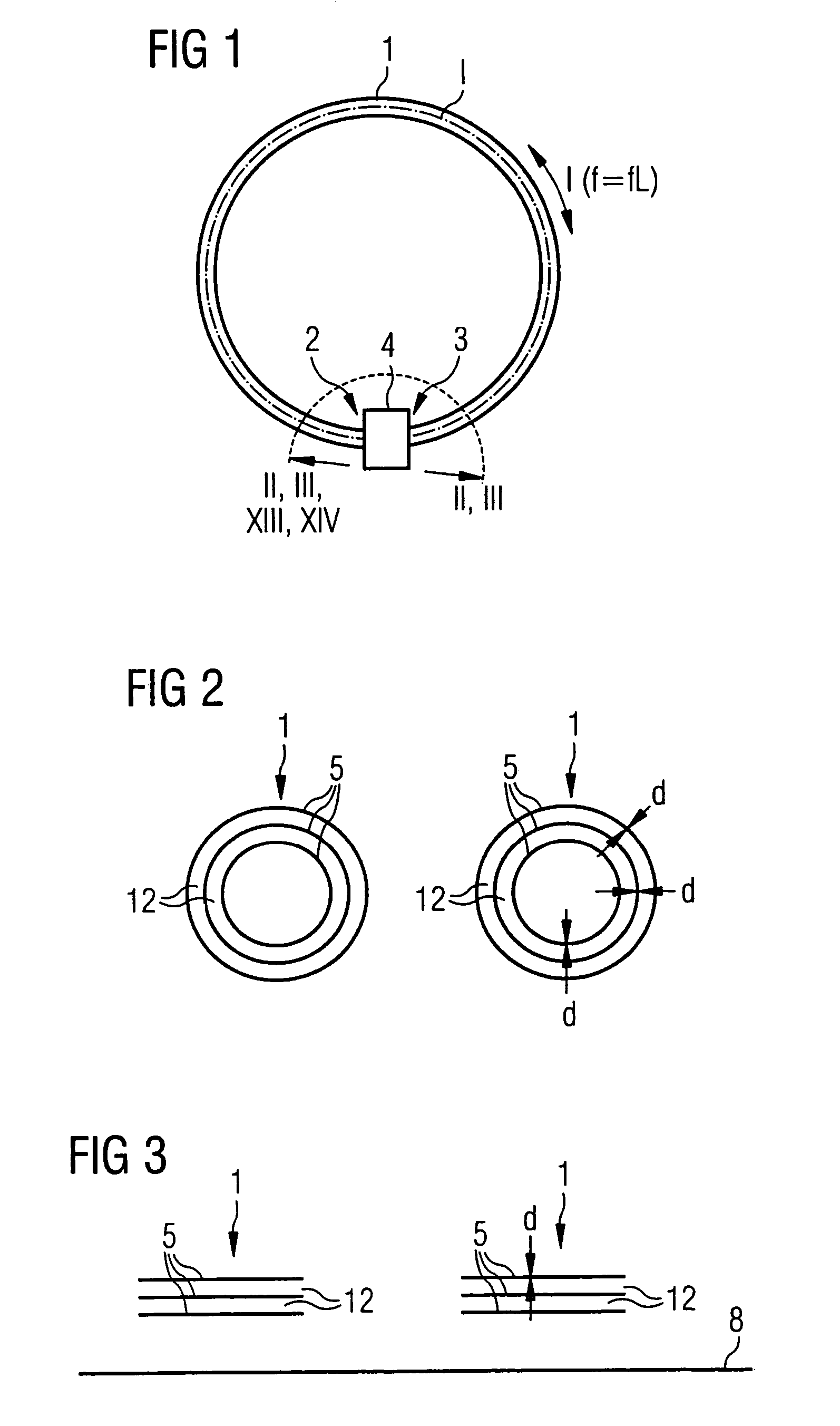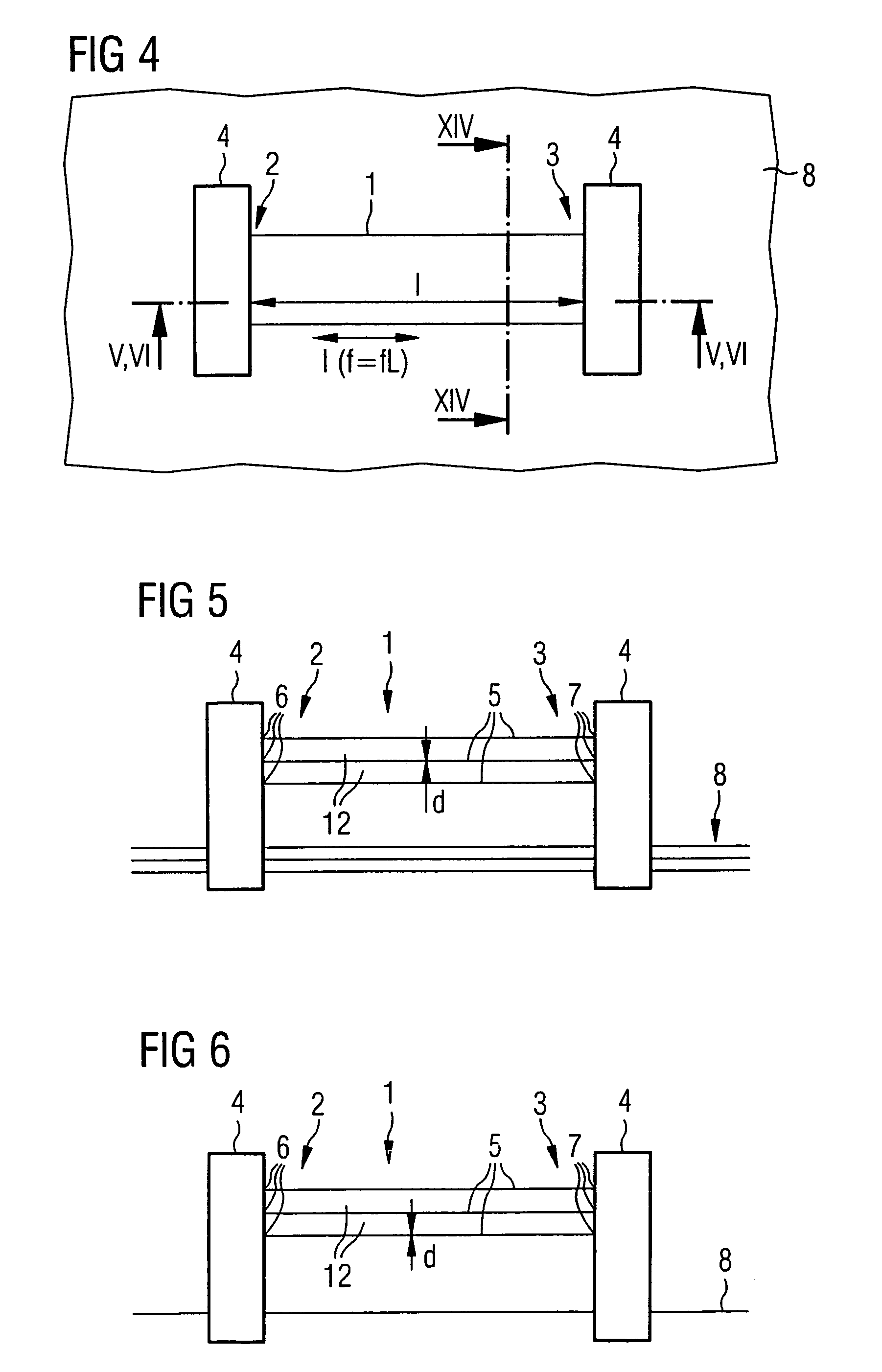Multi-layer resonator for magnetic resonance applications with circuitry allowing equal magnitude current during active operation
a magnetic resonance and circuitry technology, applied in the field of magnetic resonance resonance applications, can solve the problems of inability to achieve, significant technical expenditure, unrealistic length of magnetic resonance resonances,
- Summary
- Abstract
- Description
- Claims
- Application Information
AI Technical Summary
Benefits of technology
Problems solved by technology
Method used
Image
Examples
Embodiment Construction
[0036]According to FIG. 1, a resonator for magnetic resonance applications has a conductor element 1 that extends from a first conductor end 2 to a second conductor end 3. During operation of the conductor element 1, a resonance current I oscillates with a resonance frequency f in the conductor element 1 from the first conductor end 2 to the second conductor end 3 and back.
[0037]In magnetic resonance applications the resonance frequency f corresponds with the Larmor frequency fL of a magnetic resonance system. The conductor element 1 therefore extends over a length l that is significantly smaller than half of the wavelength corresponding with the resonance frequency f. The conductor ends 2, 3 are coupled with one another via a circuit 4, whereby the conductor element 1 is tuned to the resonance frequency f by the circuit 4.
[0038]The conductor element 1 of FIG. 1 forms essentially an annular shape. It is therefore possible for the circuit 4 to directly couple the two conductor ends 2...
PUM
 Login to View More
Login to View More Abstract
Description
Claims
Application Information
 Login to View More
Login to View More - R&D
- Intellectual Property
- Life Sciences
- Materials
- Tech Scout
- Unparalleled Data Quality
- Higher Quality Content
- 60% Fewer Hallucinations
Browse by: Latest US Patents, China's latest patents, Technical Efficacy Thesaurus, Application Domain, Technology Topic, Popular Technical Reports.
© 2025 PatSnap. All rights reserved.Legal|Privacy policy|Modern Slavery Act Transparency Statement|Sitemap|About US| Contact US: help@patsnap.com



